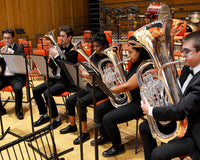Buying a guitar is a bit daunting if you don’t know where to start. Luckily, this guitar buying guide will help advise you in getting the perfect guitar for your needs.
Types of Guitar
Before getting onto the specific model you want, you must think about the type of guitar that you need.

Classical Guitar
This is the most traditional iteration of the guitar, being strung with low tension nylon strings and having very simple construction.
Are they suitable for beginners?
Yes, very much so. The nylon strings ensure a comfortable playing experience due to the low tension. So, you can focus on playing rather than battling to form callouses on your fingers.
Things to note
Classical guitars com in many sizes, meaning they’re great for smaller players. However, they aren’t commonly used in a lot of music genres. So, they’re great for Classical, Jazz or certain pop players, but for most they will be a starter instrument.

Acoustic Guitar
Probably the most commonly seen style of guitar. The acoustic guitar is a metal string guitar with plenty of volume when played.
Are they suitable for beginners?
Yes, very much so. The nylon strings ensure a comfortable playing experience due to the low tension. So, you can focus on playing rather than battling to form callouses on your fingers.
Things to note
Acoustic guitars can also come with some electronics in them. Making them “electro-acoustic” guitars. This means that they can be plugged into an amp or PA system. Perfect for performers! Acoustic guitars are incredibly popular, they’re great in nearly all forms of music. Singers and songwriters will feel at home with one.

Electric Guitar
Electric guitars are an important part of many modern music genres. From rock to jazz, to metal to country. The variety available with electric guitars is massive. Though, they can be a bit more expensive due to requiring an amp.
Are they suitable for beginners?
I would personally say yes. The strings are metal, but are usually thinner than those found on acoustic guitars. They do require a bit finger strength, but it isn’t too hard to build up to.
Things to note
You can play an electric guitar without an amp, but to get any real volume you will need one. This brings the price up, but also means you can get a sound for nearly any style of music.
Bass Guitars
Bass guitars are most commonly found as electric basses. However, acoustic models can be found. While technically guitars, they are tuned an octave lower than a standard guitar. They also have four strings. They can be considered as an electric alternative to a double bass due to this.
Are they suitable for beginners?
If bass is the instrument you want to learn, then yes! Bass is an instrument that can be as easy or as hard as you make it. To play many standard rock or pop songs doesn’t take a lot of time. But, if you wanted to play some complex funk basslines for example, you’d need a bit more practice!
Things to note
The bass is quite different from a guitar. If someone is looking to play the guitar they may be disappointed with a bass, as fun as it is to play. A bass is only suitable where aspirations of becoming a bassist lie! The benefit is that nearly every genre of music needs a bass player!
Parts of a Guitar
It’s helpful to know what you’re looking at when talking about a guitar. Just in case of needing advice or repairs, it’s helpful to know what’s what.
 1) Tuning pegs: These are turned to tune your guitar, turning one way will tighten the string, and the other will loosen.
1) Tuning pegs: These are turned to tune your guitar, turning one way will tighten the string, and the other will loosen.
2) Nut: This is what separates the part of the string that makes the note from the tuning pegs. If you play the string behind the nut it will come out with a high pitched, and quite ugly sound!
3) The neck: The neck is what you will be holding all your notes down on. This houses a few integral features:
 4) Fingerboard and frets: The fingerboard, or fretboard, is the piece of wood that houses the frets. The frets separate the neck up and are how different notes are made. Most fingerboards, also have fret markers on them. These are dots, or other shapes, that are used to help you know where certain notes are.
4) Fingerboard and frets: The fingerboard, or fretboard, is the piece of wood that houses the frets. The frets separate the neck up and are how different notes are made. Most fingerboards, also have fret markers on them. These are dots, or other shapes, that are used to help you know where certain notes are.
5) The Bridge: The bridge is found on the body, this where the strings attach to the body. There are many different style of bridge but they all do the same job really!
 6) The Body: The body is the main mass of a guitar. This will rest on your leg when you are sat down and will be the main source of resonance for the instrument. In acoustic guitars there will be a soundhole which is where the sound projects from. In electric guitars there will be one or more pickups which is how the sound goes to an amp.
6) The Body: The body is the main mass of a guitar. This will rest on your leg when you are sat down and will be the main source of resonance for the instrument. In acoustic guitars there will be a soundhole which is where the sound projects from. In electric guitars there will be one or more pickups which is how the sound goes to an amp.
7) Controls: Any controls on electric or electro-acoustic guitars are found here. Usually a volume control, some tone-shaping controls are here. If more than one pickup is there, then a switch to select these will be found.
Best Beginner Guitar
Certain brands excel at beginner guitars. Some are great for all types, others specialise in certain areas. I always recommend 3rd Avenue Rocket for beginners. They offer a great selection of Classical, Acoustic and Electric models. As well as all the accessories you’d need too.
When considering Classical guitars, Valencia have been incredibly popular for beginners for many years. Yamaha and Admira make great choices too.
For Acoustic, Yamaha and Takamine have great quality options. Or for someone looking for a good affordable option, 3rd Avenue are great value.
With Electric guitars, Squier have been a firm brand for beginners for years. Being owned by Fender gives them a certain appeal! Otherwise, as with the other types, Yamaha have some great models.
Which Size is Right for Me?
When dealing with a younger player, especially with classical guitars, you have to think about size. The most common sizes are full size, ¾, ½ and ¼ size. Every person is different, and every child grows at a different rate, but you can use this as a guideline for ages:

Guitar Packs and Accessories
A great way to ensure you get good value, and so that you don’t have to shop around, is to get a pack. Packs will usually include a gigbag and some other accessories, such as spare strings. The most important accessory in my opinion is a bag or a case of some kind.
If going the electric route, an amplifier is often included in a pack which can save a lot of money. Amps are expensive on their own a lot of the time, so bundled together can save you that cost.

A great way to ensure you get good value, and so that you don’t have to shop around, is to get a pack. Packs will usually include a gigbag and some other accessories, such as spare strings. The most important accessory in my opinion is a bag or a case of some kind.

If going the electric route, an amplifier is often included in a pack which can save a lot of money. Amps are expensive on their own a lot of the time, so bundled together can save you that cost.















